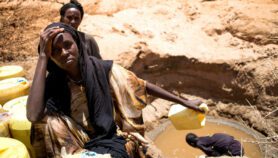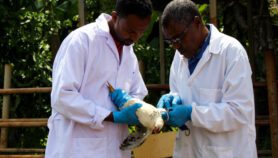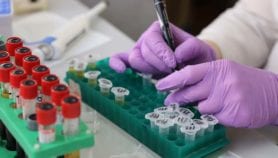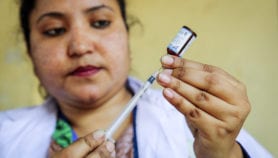By: Kushal Qanungo
Send to a friend
The details you provide on this page will not be used to send unsolicited email, and will not be sold to a 3rd party. See privacy policy.
Unlike bioprospecting on land, marine bioprospecting is a relatively new phenomenon. Some estimates, however, suggest that the probability of discovering a drug from marine sources is approximately a thousand times more than that from terrestrial ones1.
It is therefore not surprising that many pharmaceutical and biotech companies worldwide are keen to open the new-found marine medicine chest2 . They are attempting to do this either on their own, or through collaboration with marine biology or oceanography institutes that have already been operating in this field for some time2, 3.
Inevitably, however, this growing interest in marine bioresources raises questions about access rights and benefit sharing, already contentious issues between the North and the South in land-based bioprospecting. For although the oceans cover nearly 70 per cent of the earth’s surface, their biodiversity is concentrated in tropical seas, and mostly within the shallow territorial waters and Exclusive Economic Zones (EEZs) of what tend to be developing countries.
Such countries, however, are already sensitive to concerns over ‘biopiracy’, and generally believe that they do not get a fair share of benefits from any bioprospecting activity. As the long-term economic potential of marine genetic resources becomes clear4, coastal states are therefore putting in place complex laws restricting access to their marine biodiversity.
These laws, together with the high expectations that coastal states have of their marine biodiversity, are making access for both scientific and commercial marine bio-prospecting increasingly difficult3.
There are a number of reasons why restricting access to marine biodiversity will do little to stop marine bioprospecting in tropical coastal seas. Firstly, a bioprospector can always negotiate ocean access with a neighbouring coastal state, which is likely to share common marine flora and fauna.
Secondly, restricting access to biological resources is likely to make pharmaceutical companies seek alternative sources of novel molecules — such as modern combinatorial chemistry — that can provide large libraries of new molecules very quickly for drug discovery.
In other words, not only will restricting access fail to hold back the pursuit of intellectual property, but the coastal state denying access would also lose the chance to profit from its marine biodiversity. If marine diversity is to be translated into monetary value, therefore, the best option for all tropical coastal nations to pursue is a principle of open access.
However this must be accompanied by an appropriate system of benefit sharing. In the current context, such benefit sharing usually takes the form of a combination of one-off ‘up-front’ payments and long-term royalties, with the amount and percentage of both forms of monetary benefit depending on the negotiating skills of the parties.
There should be a better and more equitable way to do this. For example, a uniform benefit-sharing code built into an international framework, such as an International Marine Bioprospecting Authority (IMBA), and functioning under the aegis of the United Nations, would considerably simplify the negotiations. It would also help to reduce distrust between the North and South, and could help to eliminate marine biopiracy.
This authority would step in automatically when a state decided to open its EEZ. It would ensure free, but non-exclusive access, to all other nations that have also opened their EEZs. It would also include in its purview the high seas (under present international laws, the genetic resources of the high seas5 can be appropriated by any nation with the capability to exploit them6), and would ensure that:
- Bioprospecting in territorial seas could be done only with the participation of the respective coast state, to take care of the coastal state’s security concerns. Intellectual property rights would remain with the company or appropriate national authority that carried out the bioprospecting, although patents could only be filed after they had been scrutinised by the IMBA.
- A fixed proportion of the benefits achieved through the commercial exploitation of findings would be distributed to the coastal states to manage their marine biodiversity7 and to help build their own bioprospecting capacity.
- At the same time, guaranteed free and open access, combined with an international benefit-sharing mechanism, would encourage both scientific and commercial marine bioprospecting efforts (the difference between which is already becoming increasingly blurred).
- Finally, a suitable monitoring body could facilitate the transfer of appropriate technology to coastal states, particularly in Third World nations, to allow them to carry out their own bioprospecting and thus eventually contribute to the common royalty pool.
Given the enormous potential of marine bioprospecting and the expectations of the Third World coastal states, I suggest that the time is ripe to harmonise access and benefit-sharing by setting up the proposed IMBA along the above lines.
The author is at the National Institute of Science, Technology and Development Studies, KS Krishnan Marg, New Delhi-110012, India. He acknowledges the encouragement and support of the Director of NISTADS, Prof. Rajesh Kochhar and also thanks Ms. Usha Mennon for critical comments on the manuscript. Dr. Kristen Benkendorff is thanked for sharing her preprints with the author.
References:
1. E. A. Evans-Illidge and P. T. Murphy (1998)
2. See for example, K.Y. Kreeger, The Scientist, v8, 14 (1994) and J. Henkel, FDA Consumer magazine, January-February (1998).
3. K.Y. Kreeger, The Scientist v10, 1 (1996)
4. J. Ruitenbeek and C. Cartier, The World Bank (1999)
5. A.C. DeFontaubert , (Eds. WWF/IUCN), Gland, Switzerland, (2001).
6. L. Glowka, and J. Hyvarinen, SBSTTA, CBD, Paris, 4 September 1995.
7. It is generally believed that there is no traditional use of marine organisms (for drugs etc.) worldwide, though in some cases indigenous people have been involved in conserving marine biodiversity. See a case study in Fiji, by W. G. Aalbersberg.













